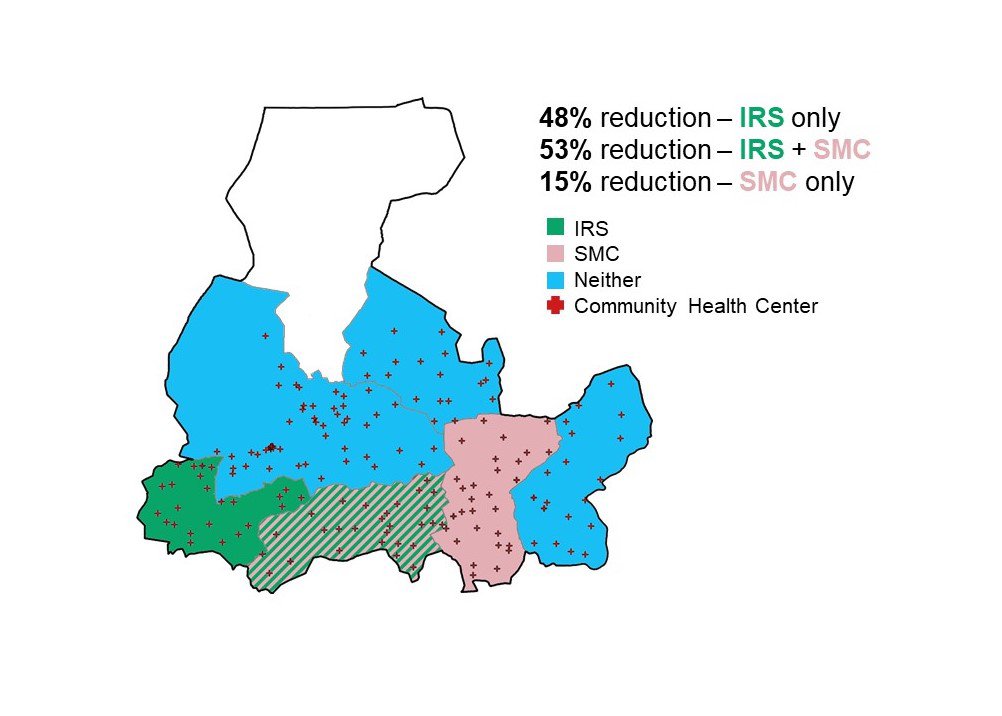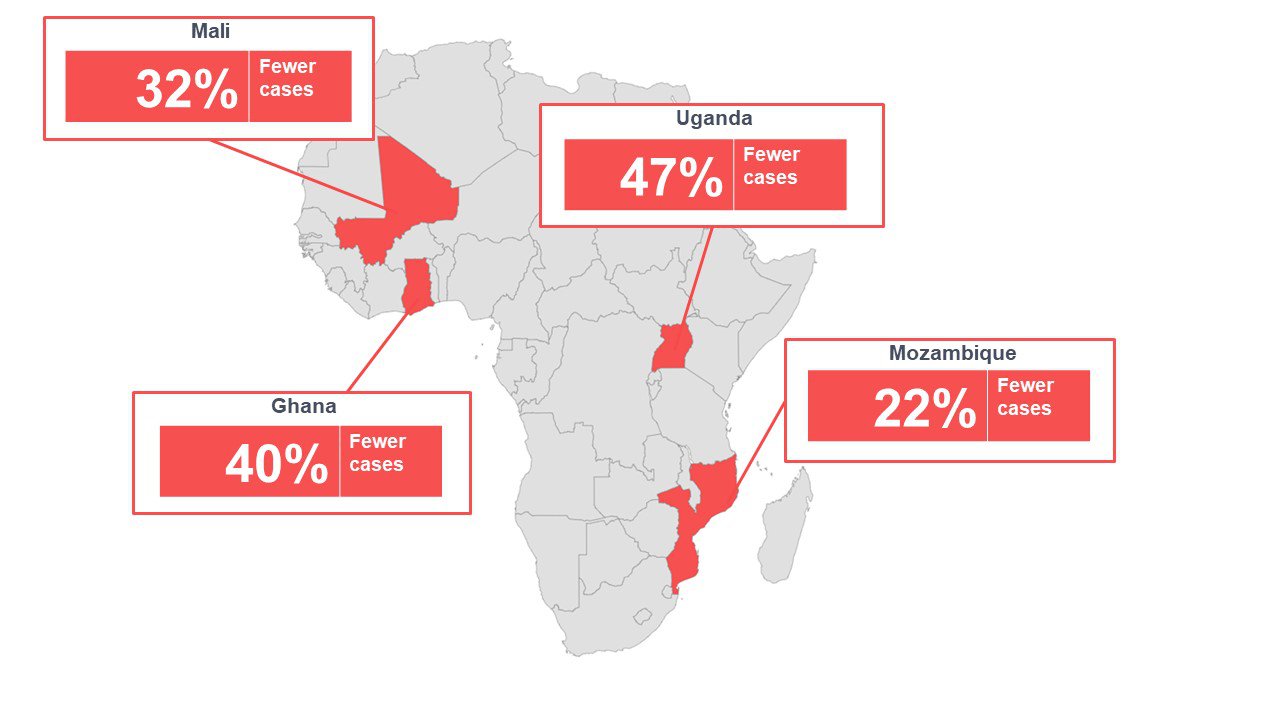National malaria control programs and their partners face the challenge of identifying and mobilizing limited resources to geographic areas where they will have the greatest impact. Increasing insecticide resistance means current interventions are becoming less effective. New tools that are potentially more effective against insecticide-resistant mosquitoes have been introduced, but their use is hampered by higher prices and limited evidence of their impact and cost-effectiveness.
Routine health management information systems collect and continually report information at various levels of the health system, including data about service delivery, commodities, and case management. Data are collected through paper-based or electronic forms from individual patients or aggregated to the national level. Recent investments in health information systems have improved the availability of, access to, and subsequent use of high-quality routine data. This has led to increased focus on data sharing, building connections to existing data systems and producing visualizations to facilitate a more comprehensive understanding of the health ecosystem.
“Recent investments in health information systems have improved the availability of, access to, and subsequent use of high-quality routine data.”
The value of analyzing trends in routine data: three examples
Analyzing trends in routine data is a low-cost way to quickly assess the impact of new tools for reducing the malaria burden. In cases where a tool or intervention’s impact has been demonstrated, evaluations using routine data can support informed decision-making around intervention placement and mix allowing intervention packages to be tailored to local contexts.
From 2016 to 2019, PATH led impact evaluations of indoor residual spraying (IRS) programs in five countries as part of the Next-Generation Indoor Residual Spray Project (NgenIRS) funded by Unitaid and led by IVCC. These evaluations focused on the impact of third-generation IRS products (3GIRS), which are IRS products that last at least six months and are effective against pyrethroid-resistant mosquitoes. Specifically, the evaluations focused on changes in malaria burden when these 3GIRS products are used in addition to standard malaria control packages, such as long-lasting insecticidal nets, chemoprevention, and prompt and universal testing and treatment at all public and private health facilities.
These evaluations clearly show the value of analyzing routine data. The data showed that 3GIRS products provide additional protection against malaria by reducing vector populations in areas of moderate to high transmission and evidence of pyrethroid resistance. Additional results indicate that careful consideration should be given before removing IRS from a given area.
In 2015, IRS operations were suspended in districts in the Upper East Region of Ghana. Malaria cases increased substantially (400%) compared to 2014. Reintroducing 3GIRS in some of these districts in 2017 reduced malaria cases significantly (42%) in those districts compared to the previous year.
Adding 3GIRS to drug-based interventions is likely to maximize the impact of those interventions
In Mali, districts receiving seasonal malaria chemoprevention (SMC) or IRS saw a reduction in malaria compared to districts that received neither (15% and 48%, respectively) but a greater reduction was seen in districts receiving both interventions (53%).

Map of Ségou Region, Mali showing districts that received IRS, SMC, both interventions or neither intervention in 2014.
Switching from an older product to a 3GIRS product significantly increased the public health impact of IRS campaigns
Evaluations in Uganda showed that switching from an older IRS product to a 3GIRS product led to a greater reduction in malaria cases. IRS with an older product was associated with a 20% reduction in malaria risk, compared to 47% reduction after switching to IRS with 3GIRS on top of standard long-lasting insecticidal nets (LLINs) in an area of high pyrethroid resistance.
Overall, 3GIRS resulted in a 22% to 47% reduction in confirmed cases recorded by the public health system compared to similar regions without IRS.

Estimated percent reduction in cases by country.
Routine data can enable timely and effective responses
These evaluations demonstrate the breadth of information that well-defined observational analyses with quality-assured routine data can provide for assessing the impact of malaria control interventions. Routine data can enable timely and effective responses in endemic regions, prevent outbreaks and resurgences, track progress and hold governments and the global malaria community accountable to control and elimination targets. In recognition of this, the World Health Organization has identified transforming malaria surveillance into a core intervention as a pillar of the Global Technical Strategy for Malaria 2016-2030 in order to empower local leaders to make evidence-based decisions on where to use new vector control tools and to improve knowledge of their local impact.
Routine data has many applications beyond vector control evaluation. Strengthened routine data systems have led to improvements in supply chain management, health worker productivity, and immunization service delivery. As programs continue their efforts to strengthen routine health information systems through better case management, consistent data collection tools, accurate and prompt recording and reporting, opportunities to use routine data for rapid and inexpensive evidence-based decision-making will increase.
